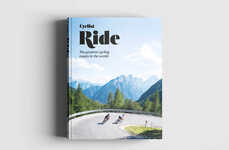
"How We Drive"
Going Like Sixty — July 31, 2008 — Autos
References: tomvanderbilt
Car crazy U.S. is also home to road rage, so it's no surprise that Traffic: How We Drive, by Tom Vanderbilt is getting a lot of attention. The book is literally about weaving through traffic effectively.
Merging, where multiple lanes reduce in number, is a big game. Courtesy dictates merging early, but Vanderbilt proved that merging at the last possible minute is the best strategy.
Vanderbilt is also a big believer in round-abouts, something almost unheard of in the U.S. He also has sound advice on how driving slower can actually be quicker. The video shows how common sense and "experts" are dead wrong.
(Video language NSFW)
Merging, where multiple lanes reduce in number, is a big game. Courtesy dictates merging early, but Vanderbilt proved that merging at the last possible minute is the best strategy.
Vanderbilt is also a big believer in round-abouts, something almost unheard of in the U.S. He also has sound advice on how driving slower can actually be quicker. The video shows how common sense and "experts" are dead wrong.
(Video language NSFW)
Trend Themes
1. Bad Driving Strategies - Exploring new theories and advice for navigating the roads more effectively
2. Roundabout Adoption - Encouraging the implementation of roundabouts in areas where they are not common
3. Benefits of Slow Driving - Highlighting the advantages of driving slower to increase traffic flow and safety
Industry Implications
1. Transportation - Innovative driving strategies and infrastructure changes can improve transportation efficiency and safety
2. Urban Planning - Roundabouts are a potentially disruptive innovation opportunity for cities and towns looking to improve traffic flow
3. Automotive - New studies about driving habits and speed could lead to innovative safety features and technologies for future cars
6
Score
Popularity
Activity
Freshness























